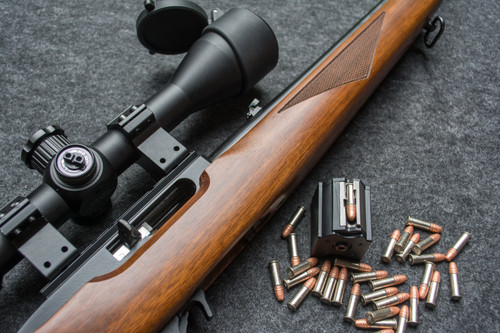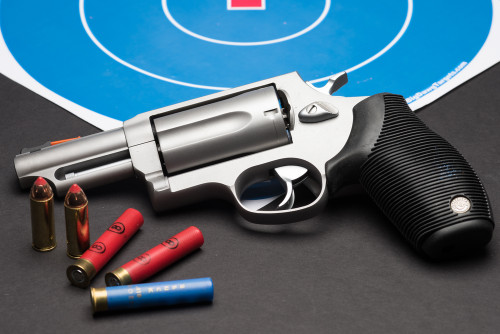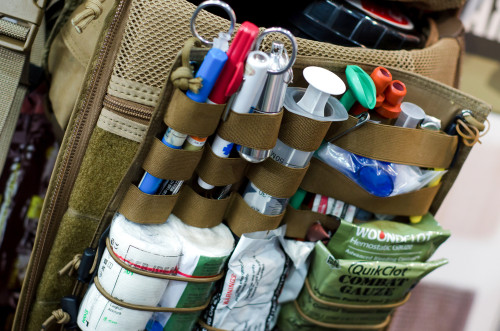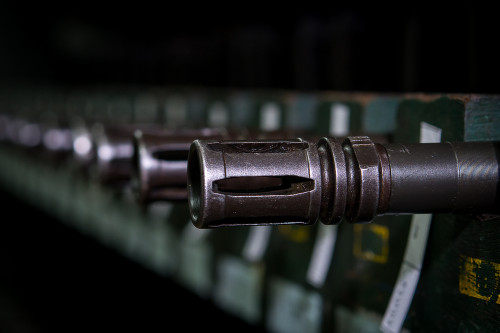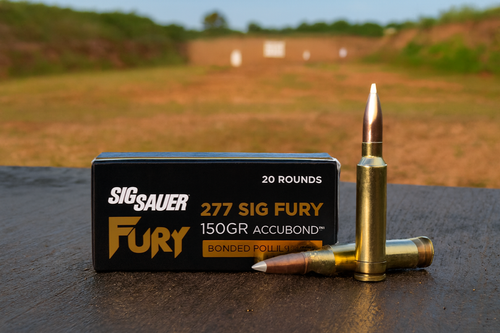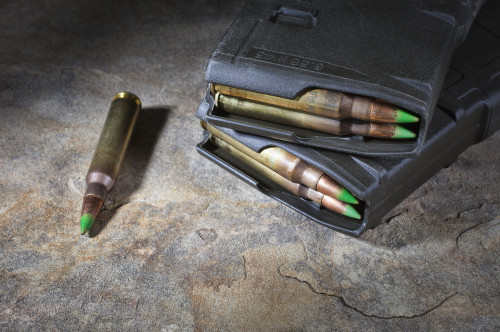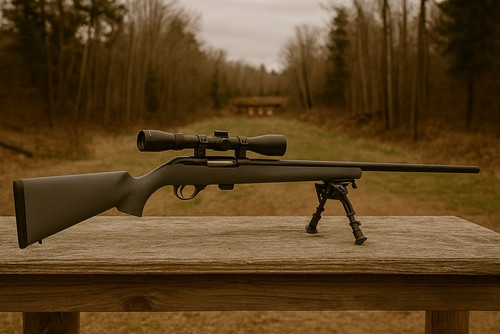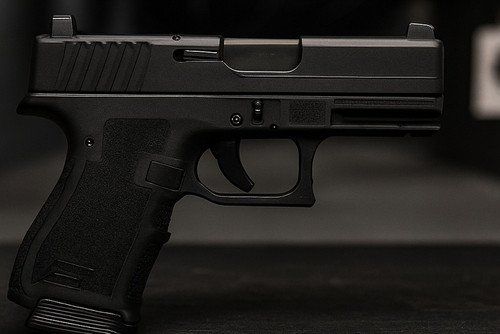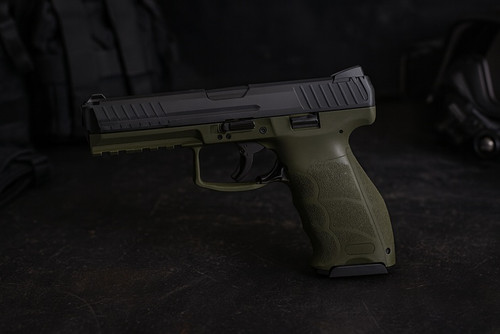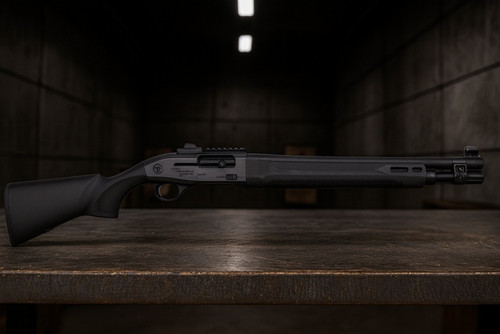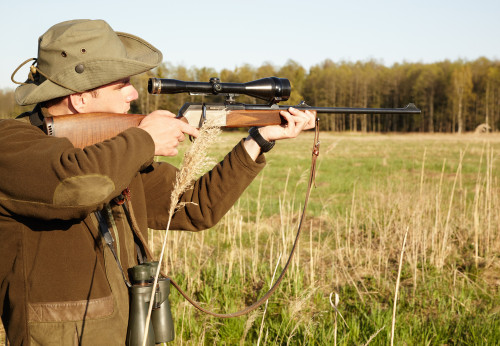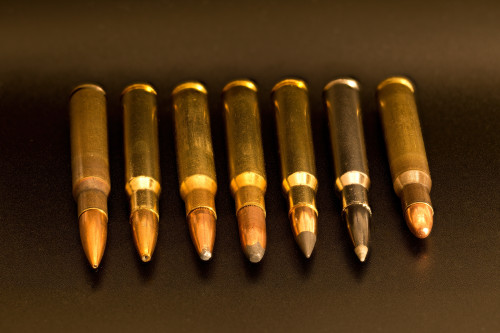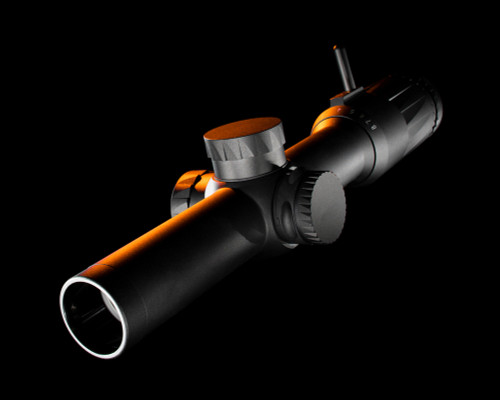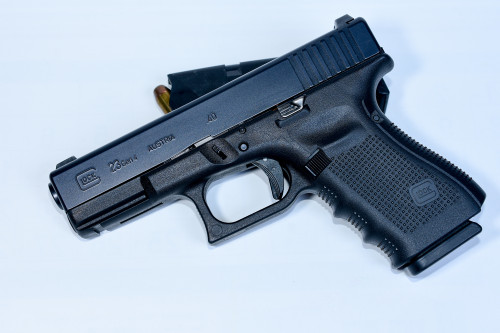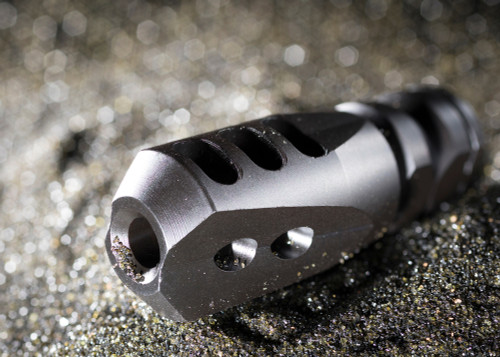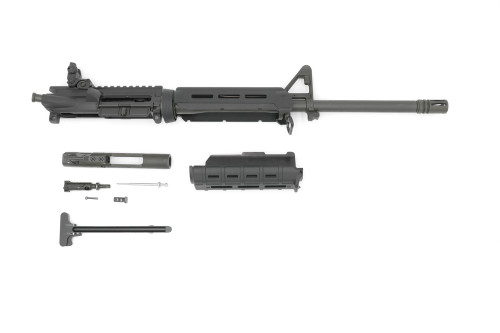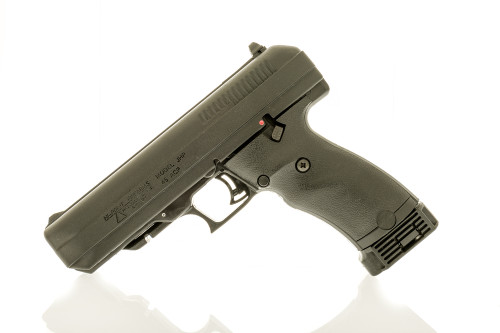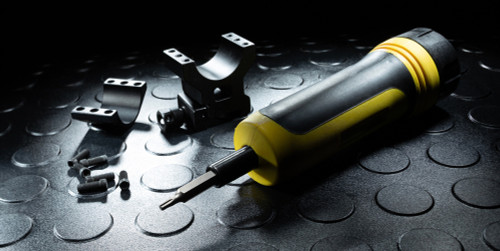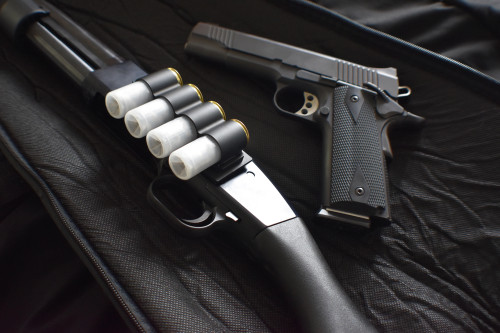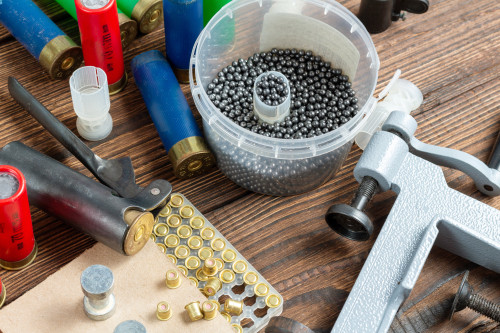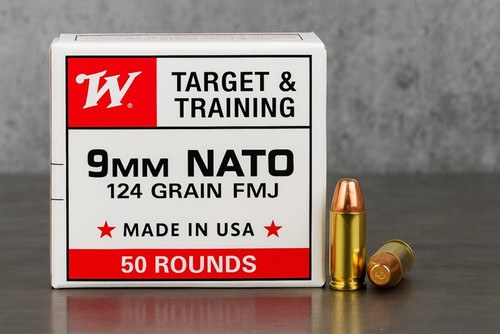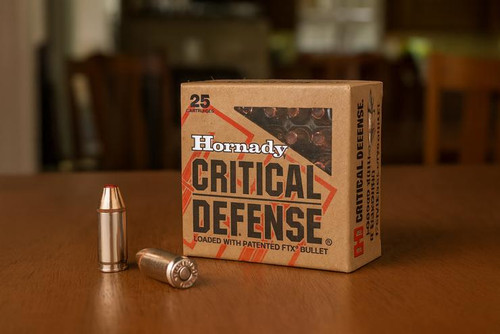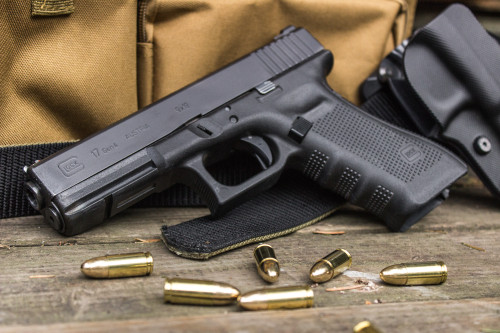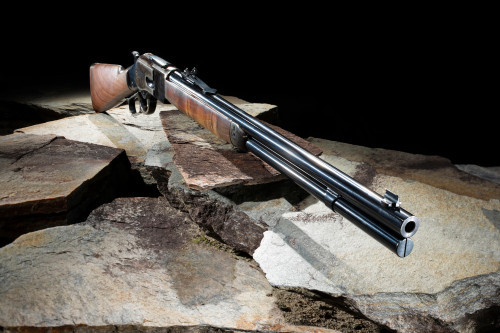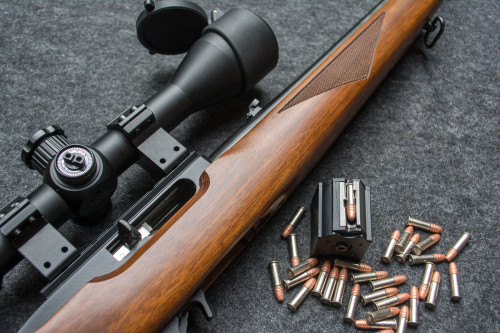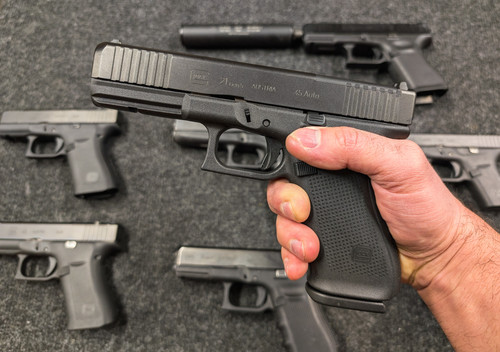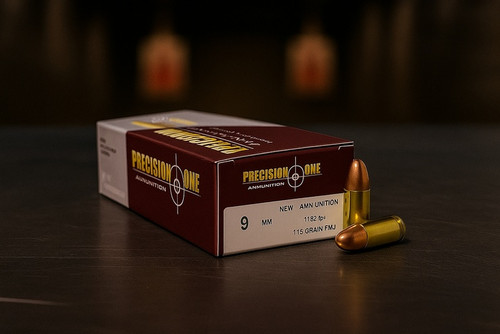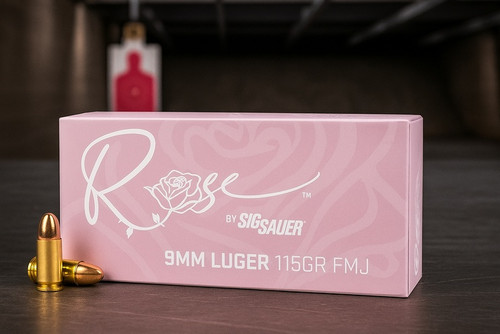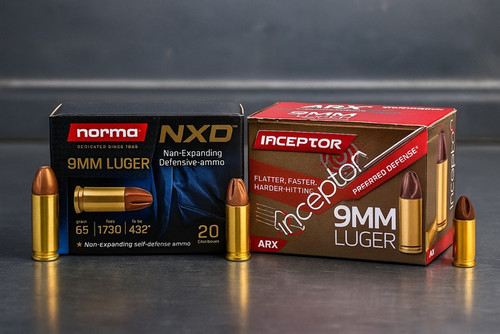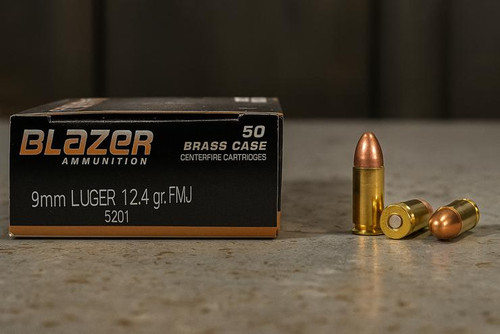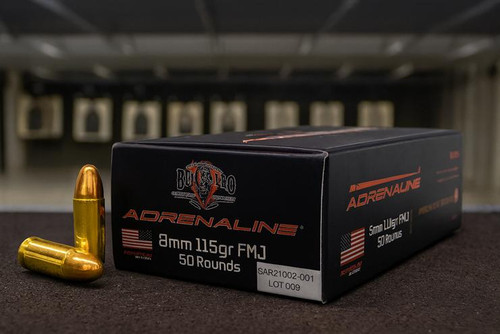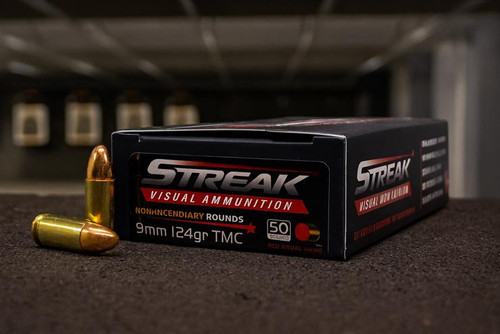You can slap all kinds of things on your gun — red dots, scopes, extended mags, foregrips. If you want to take it a step further, get a suppressor or some other kind of muzzle device.
However, unlike other attachments, you can’t just strap a suppressor to the end of your gun and hope for the best. You need a precise, robust system that can withstand the repeated concussive force of gunshots. You need a threaded barrel.
A threaded barrel is a barrel replacement with threads at the end, used for screw-on attachments like suppressors, flash hiders, compensators, etc.
Once you start changing the structure and the more essential parts of your firearm, you know you’re in deep. So, before you start disassembling your gun on your kitchen table, it’s important to understand some key details about threaded barrels to ensure you get the functionality and performance you need.
Let’s take a closer look at what threaded barrels are, what they do, how they are used, and how to find a good one.
(Source: www.guncrafterindustries.com)
Threaded Barrels Explained
A threaded barrel is a specialized or modified barrel with external grooves carved or forged near the muzzle designed to receive screw-on attachments. Generally, all guns can be upgraded or modified to incorporate a threaded barrel.
If you’re in the market for a threaded barrel, you probably have three options:
- Purchase a firearm with a factory-threaded barrel.
- Buy a replacement threaded barrel for a gun you already own.
- Have a gunsmith modify an existing barrel to add threads.
If you want to upgrade your current gun, you’re better off buying OEM barrels from the gun manufacturer or from a reputable brand such as Faxon or Daniel Defense.
NOTE: We’re specifically talking about muzzle threads here. Receiver threads are on the opposite side of the barrel and facilitate a screw-on connection to the receiver (unrelated to this discussion).
Threaded Barrel Size & Pitch Notation
For any muzzle device to work properly, you need a secure, precise fit. You can’t just wrench an ill-fitting device onto your newly-threaded barrel. The threads of that barrel and the muzzle device must align perfectly for successful operation.
Unfortunately, threaded barrels don’t have a universal standardized system. They use the same ad hoc blend of imperial and metric units typical of firearms (e.g., bullet caliber). However, some standard sizes have emerged through military use or common practices from muzzle device manufacturers.
With ammo, you don’t have many choices on caliber. Your bullet must fit your gun, since it only uses one type of bullet (with the exception of some calibers like .233/5.56). The same is true for threaded barrels and muzzle devices. Make sure the threads on your barrel match the threads on your accessories. But first, you need to know how to read thread notation.
Barrel threading involves three key factors:
- Thread diameter describes the cross-sectional width of the thread. This number will be in millimeters (notated with “M” for metric) or fractions of an inch written as either a fraction or decimal. If there is no “M,” you can assume the measurement is in inches.
- Thread pitch describes the distance between threads, notated as threads per inch (TPI) or threads per millimeter. A higher thread count is described as having a “fine” pitch and generally has a tighter fit. A lower thread count has a “coarse” pitch.
- Tightening direction is notated as either right-handed (RH) or left-handed (LH). Typically, US-made threading is right-handed, meaning it tightens clockwise (righty-tighty, lefty loosey). In Europe and other places, devices might be left-handed (LH) and tighten counterclockwise. Tightening direction will usually be marked on the device with an arrow.

Ultradyne Athena Linear 350Leg Comp
$90.00
Ultradyne
Prices accurate at time of writing
Thread Notation Examples
Thread notation is generally written as follows:
[system designator] [thread diameter] [x] [thread pitch] [tightening direction]
Here are some examples:
- 1/2x28 indicates a half-inch thread diameter at a 28 TPI pitch that tightens clockwise. You know it’s imperial units because there is no “M,” and you know it tightens clockwise because there is no “LH.”
- 1/2x36 is similar to the first example (above) but has finer threading at 36 TPI.
- .578x24 indicates a .578-inch thread diameter at a 24 TPI pitch that tightens clockwise. Again, no tightening direction is included because imperial units are used, so assume clockwise tightening.
- M 13.5x1 LH indicates a 13.5mm diameter thread at a one thread per mm pitch that tightens counterclockwise. You know it’s metric because of the “M.”
- M 15x1 RH indicates a 15mm diameter thread at a one thread per mm pitch that tightens clockwise. Note that the “RH” is included here because metric threads are more commonly LH, so it had to be spelled out. (They like to keep things interesting).
- M 22x1.5 indicates a 22mm diameter thread but with a finer thread count of 1.5 threads per mm. The tightening direction isn’t indicated, but we can assume LH because it’s metric.
This notation applies to both barrels and accessories, so all you need to do is match them up exactly, and you are good to go. However, the notation does not include the precise number of threads on either the barrel or the device. Again, this will vary. But if you buy the right device for the right barrel, this shouldn’t be a problem.
Most muzzle devices will be marked with this information, but not always. So, be sure to research the device before buying. If you cross thread with the wrong size, pitch, or tightening direction, you could wreck either your muzzle device or your barrel — a costly mistake.
Common Thread Size & Pitch
While far from an exhaustive list, here are some common firearms and their matching thread pitch.
| Caliber & Platform | Size & Pitch |
|---|---|
| .22LR | 1/2 x 28 |
| 9mm (Beretta, Glock, Springfield) | 1/2 x 28 |
| 9mm (HK, M&P, Sig Sauer) | M13.5 x 1 |
| 9mm (AR variants) | 1/2 x 36 |
| .40 S&W (Beretta, Glock) | 9/16 x 24 |
| .40 S&W (HK) | M14.5 x 1 LH |
| .45 ACP (1911, FN, Sig Sauer) | .578 x 28 |
| .45 ACP (HK USP, HK45T, Kriss) | M16 x 1 LH |
| 5.56mm / .223 (AR) | 1/2 x 28 |
| 5.56mm / .223 (FN2000, FNC) | 9/16 x 24 LH |
| 5.56mm / .223 (ACC556, Mini-14) | 9/16 x 24 |
| 7.62mm / .308 (AR-10, 300BLK) | 5/8 x 24 |
| 7.62mm / .308 (M1A, M14) | .595 x 32 |
| 7.62mm / .308 (AK) | M14 x 1 LH |
| 7.62mm / .308 (HK) | M15 x 1 RH |
| .338 | 5/8 x 24 |
| .338 (Barrett 98B) | 3/4 x 24 |
| .338 (Sako, Tikka) | M18 x 1 RH |
| .458 SOCOM | 5/8 x 24 |
(Source: www.matrixarms.com)
Choosing a Threaded Barrel
Consider these factors before investing in a threaded barrel:
Legality
Threaded barrels are illegal in some states. More accurately, “assault weapons” are illegal in some states — but some states define assault weapons as those that have a threaded barrel and/or some specific muzzle device.
Some places (CA, WA, etc.) consider a gun with a threaded barrel as an assault weapon, and make it illegal to possess one. In other places (CT, MD, etc.), threaded barrels might technically be legal, but certain muzzle attachments such as flash suppressors may categorize the gun as an assault weapon (and thus illegal).
Always make sure to check state and local regulations before you buy.
Compatibility
Compatibility is critical with threaded barrels and muzzle devices.
- The barrel must be compatible with the gun. This can get tricky as sometimes different generations of the same gun may or may not have interchangeable barrels. Again, be sure the barrel you buy is going to fit your gun.
- The muzzle device must be compatible with the barrel. As described above, precision fit is essential. Don’t try to be clever by mismatching devices outside of their design. This is a good way to destroy your barrel.
- The bullet caliber must be compatible with the muzzle device. Be absolutely sure your muzzle device is designed for your chosen round. Sometimes, you can fit a muzzle device made for one gun onto another of a different caliber. For example, both the .223 and the 9mm (.354) may use a 1/2x28 thread pitch, but that doesn't mean the devices are interchangeable. If you try to shoot a 9mm round through a .223 hole, you’ll literally have a disaster on your hands.
The point is, this is not a time to screw around and get clever. Buy the devices designed specifically for your gun and you’ll be fine. Trying to jerry-rig a solution might end up with your expensive gun, threaded barrel, and muzzle device all going in the trash — and you going to the hospital.
Installation
As a general rule, swapping out a barrel is a simple process. If you clean your gun regularly (and of course you should), you’ve removed your barrel countless times. Adding a threaded barrel is as simple as that. However, if you’re concerned about it, consult the manual, a professional, or your trusty friends on YouTube. It never hurts to get a second opinion from an expert when dealing with firearms.
Maintenance
Understand the additional (albeit, limited) maintenance challenges created by a threaded barrel. Specifically, if those threads get dirty and full of grime, you could end up stripping the threads over time as you attach and remove muzzle devices. Plus, you need to be extra careful not to ding or damage those threads while cleaning.
Application
While the idea of high-speed muzzle attachments might sound cool, stop and ask yourself if a threaded barrel is something you really need.
If you’re not going to use it regularly, you’ll just end up paying a lot of money to add an inch or so to your barrel length. If you don’t plan to actually use muzzle devices, a threaded barrel is a waste of money.
Can You Use a Threaded Barrel Without a Muzzle Device?
Yes, you can shoot through a threaded barrel without a muzzle attachment. After all, you may not always want to use a suppressor or compensator. You may also be budget-conscious and purchase your threaded barrel before you go through all the NFA trouble of getting a legal suppressor.
However, shooting through a threaded barrel without any device attached may cause damage to the threads. While you’re waiting for your desired attachment, get a low-cost thread protector to prevent damage.
Reviews
Google is your friend. While you can’t rely totally on the passionate rantings of internet strangers, they’re a powerful source of knowledge to help you begin to understand the threaded barrel market.
Reviews from trusted firearms-related companies will help you understand the accessories available for your particular gun, and the issues you might encounter. There is never a shortage of gun guys willing to offer an opinion!
Drawbacks of Threaded Barrels
There are few drawbacks to using a threaded barrel. They increase both the maintenance requirements and the overall complexity of the weapon system. They also extend the length and generally make the system more unwieldy, especially for compact weapons.
Plus, consider that firearms are precision instruments and any modification will have some effect that might require retraining.
However, every gun owner can benefit from using a suppressor (assuming it’s legal where you live), and you can’t use a suppressor without a threaded barrel. So, whatever the tradeoffs, they’re worth it.

Ultradyne Athena Linear Comp 1/2X28
$90.00
Ultradyne
Prices accurate at time of writing
Types of Muzzle Devices to Use With Threaded Barrels
The purpose of a threaded barrel is to attach a muzzle device. Muzzle devices work by capturing and redirecting exploding gas to achieve a desired effect. Here are the most common muzzle devices:
- Suppressors reduce the sound signature of a muzzle blast by forcing exploding gas through a series of baffles. Suppressors help reduce noise pollution and minimize hearing damage. For most gun owners, suppressors are the main reason to get a threaded barrel.
- Muzzle brakes reduce how much recoil shooters feel by laterally redirecting gas and energy through multiple ports and chambers, which reduces the force going straight backward. Muzzle brakes are designed for high-powered guns and/or smaller shooters who might struggle with recoil.
- Compensators are similar to muzzle brakes but are specifically designed to reduce muzzle rise. Compensators redirect energy upward to force the gun to remain level. This is important for rapid, precision fire and follow-up shooting in competitions. The tradeoff is it creates extra lateral concussion, which can be a problem for others nearby.
- Blast shields can be added on top of the compensator to reduce lateral concussion.
- Flash hiders reduce the signature muzzle flare when a gun fires. This can be useful in home defense scenarios to conceal your position and limit the blinding effects of muzzle flash in a dark room.
All of these devices do a particular job well. While combination devices exist, they are less effective than dedicated devices. As always with firearms, there are no “solutions”, only tradeoffs.
(Source: Precision Machine Shed (Youtube.com)
Other Muzzle Accessories
Here are a few other muzzle accessories that you need to know about:
- Adaptors allow you to fit a muzzle device on a threaded barrel with a different size and pitch. However, an adaptor adds instability to the system, potentially making the gun more unwieldy by further extending the barrel.
- Boosters/pistons help rebalance the gun and compensate for the extra weight of a muzzle device. An unbalanced gun might disrupt slide function and otherwise impair the gun’s proper cycling.
- Quick-detach mounts allow you to rapidly swap out barrel devices without needing tools or screwing on or off a device. This is mostly applicable in complex tactical scenarios, but good to know just in case.
- Thread protectors are screw-on covers that protect muzzle threads when you’re not using a muzzle device. This is important because if the threads get damaged or bent, the muzzle might be useless. Some threads are harder and more damage-resistant than others, but better to be safe than sorry.
(Source: tisasusa.com)
Bottom Line
A threaded barrel is a powerful tool to enhance your gun’s effectiveness. Just be sure you understand what you’re buying and always double-check sizing and compatibility before you pull the trigger on a new barrel or device.
The key takeaway here is to focus on precision and proper fit. Trying to wing it with an “it’ll be fine” attitude can have disastrous consequences. Take the time to understand what you need so you can make an informed decision.
Whether you’re looking for quality muzzle devices, ammo, or other attachments for your firearm — we’ve got what you need at Pro Armory. Check out our deals on gear for every occasion, all at a price you can afford.









